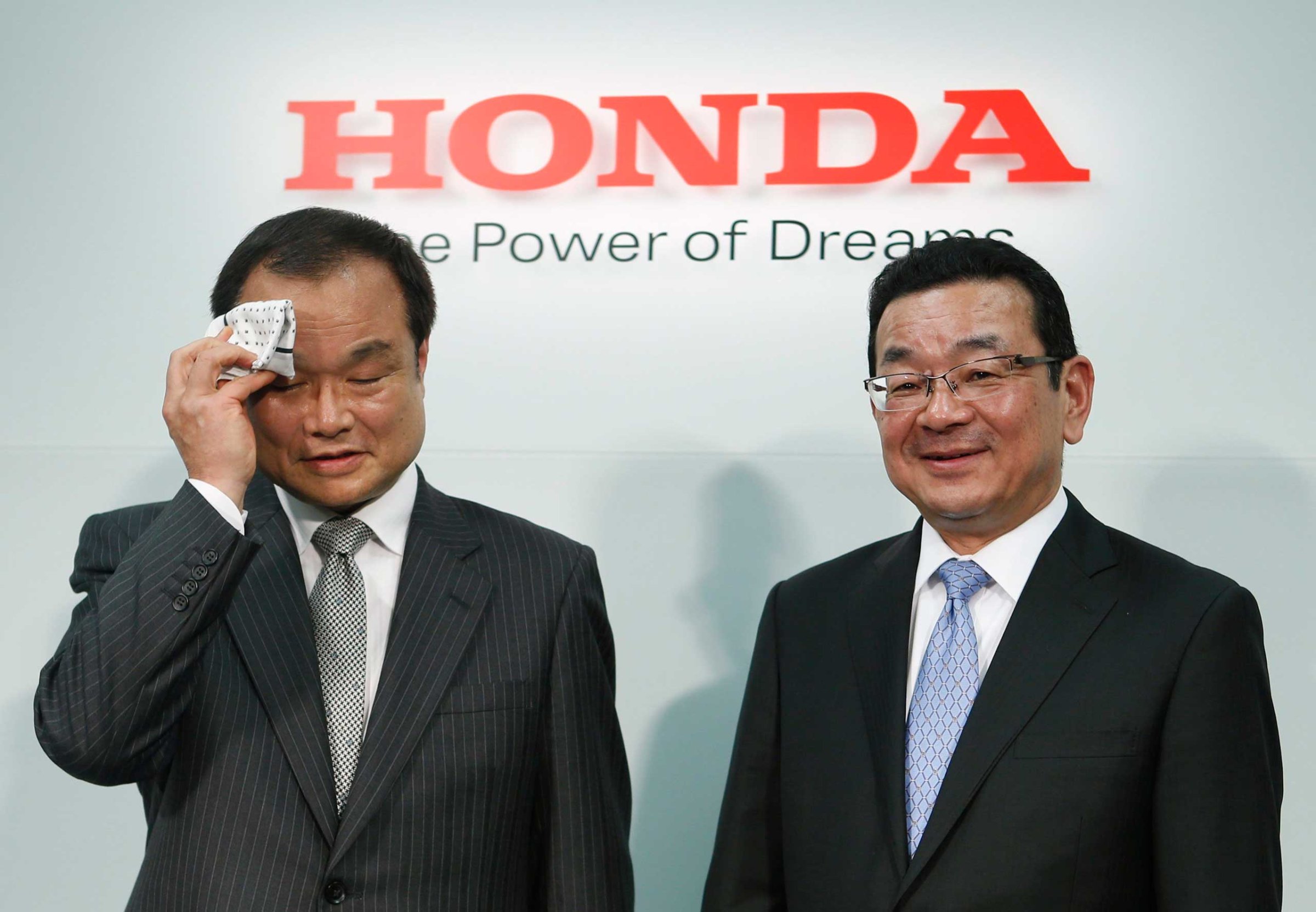
Honda’s chief executive since 2009 is out following a series of quality and efficiency problems that called into question whether he might have been pushed the Japanese automaker too hard and fast.
The removal of Takanobu Ito from the top post was part of a broad management shakeup, in which several key executives worldwide will be replaced in senior posts. “I felt this was the right timing for us to boost efficiency and results globally,” Ito, 61, told reporters.
The company’s loss of momentum in the U.S., its most important market, may be its biggest headache. Accordingly, the latest shakeup includes the departure of Tetsuo Iwamura as chairman of the American Honda Motor Company. He will remain a director of Honda – but no new chairman will replace him. Instead, Takuji Yamada, president of American Honda, will assume his duties.
Ito will be replaced in June by Takahiro Hachigo, 55, an engineer who currently serves in a senior post in Honda’s research and development arm in China. Ito, 61, will continue to serve as an adviser to the company.
Honda shareholders and fund managers may have played a part in the change. In the past five years, Honda shares have returned 27% to holders, lagging well behind the Nikkei 225 Index, which returned 82%. Nissan shares returned 66%; Toyota shares 146%.
American Honda, once a phenomenon in the U.S. that set standards for customer satisfaction, has become known for reliable, unexciting models that lack distinctiveness. Their lead in quality over models built by Detroit, meanwhile, has narrowed or disappeared as U.S. and European automakers have improved their offerings.
Lately, Honda has taken steps to make their styling and design more expressive, as evidenced by a new Pilot crossover that will appear this summer. The new Pilot is a departure from its boxy, utilitarian predecessors. Honda also introduced a new Acura NSX supercar, another step in what the automaker is calling “The Year of Honda” in the U.S., in an attempt to highlight improvements and innovations.
The automaker has been under a cloud due to quality problems with its Fit hybrid subcompact, which was recalled five times as of last October. Honda also set aside hundreds of millions of dollars to cover expected damages due to mass recalls of its cars equipped with Takata Corp. air bags that have been linked to six deaths.
Ito has conceded publicly that quality problems with Fit may have a connection to sales targets for the model that were too aggressive. Meanwhile, Honda lost market share last year in the U.S., as its top Japanese rivals, Toyota and Nissan gained. Like Toyota, Honda has been reorganizing operations to move more authority and responsibility from Japan to regional centers around the world.
Hachigo, described as a broadly experienced executive, jumped several levels in executive rank to his new job. He had worked on development of the Odyssey minivan and CR-V crossover.
This article originally appeared on Fortune.com.
Read next: Here’s Why Russia Is Cracking Down on Google
More Must-Reads from TIME
- Where Trump 2.0 Will Differ From 1.0
- How Elon Musk Became a Kingmaker
- The Power—And Limits—of Peer Support
- The 100 Must-Read Books of 2024
- Column: If Optimism Feels Ridiculous Now, Try Hope
- The Future of Climate Action Is Trade Policy
- FX’s Say Nothing Is the Must-Watch Political Thriller of 2024
- Merle Bombardieri Is Helping People Make the Baby Decision
Contact us at letters@time.com